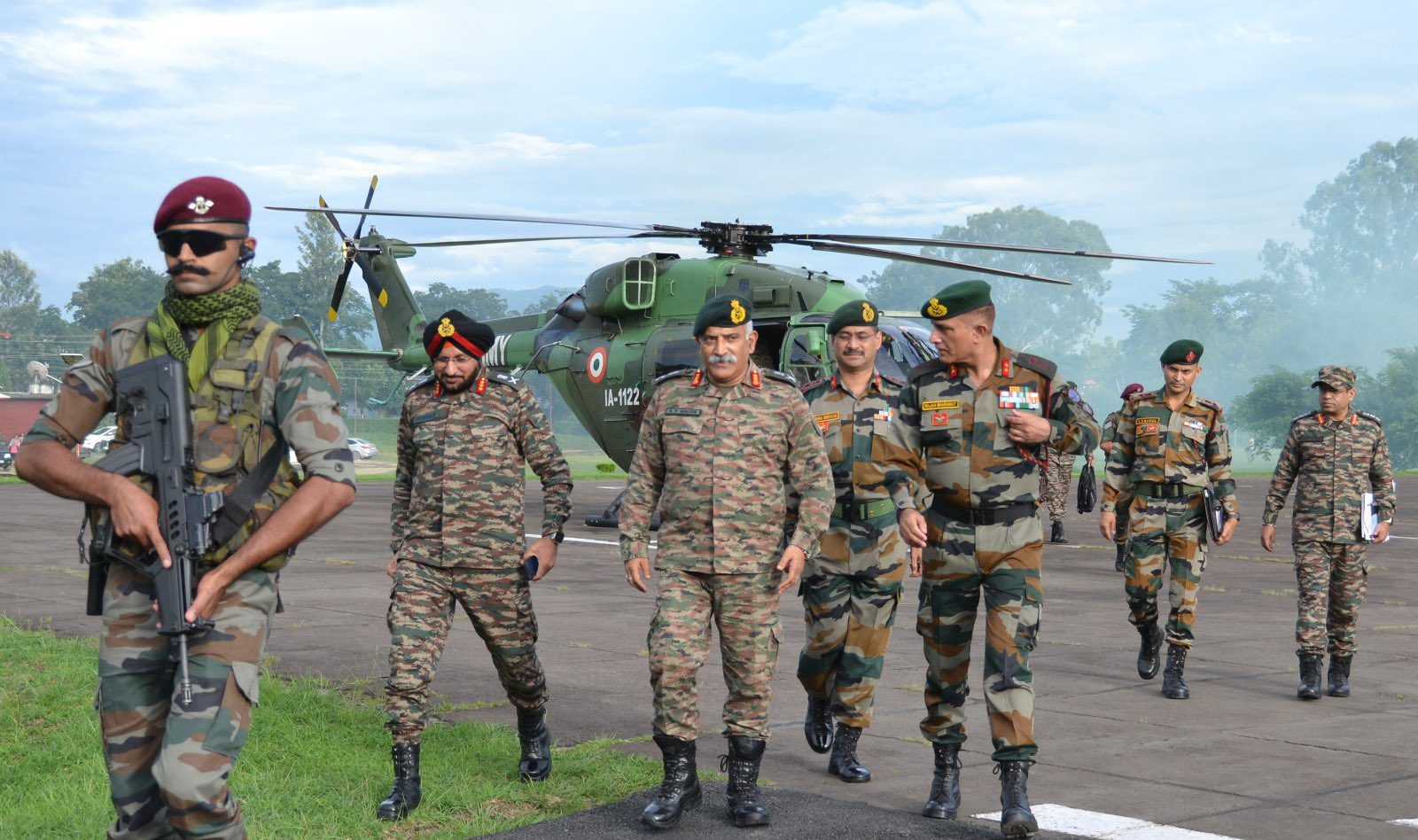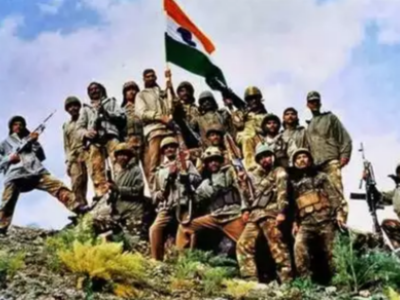From History to Heroism: The Indian Army's Unwavering Commitment
The Indian Army, a cornerstone of India's defense mechanism, boasts a legacy rich in valor, dedication, and service. As the world's second-largest standing army, it not only safeguards national sovereignty but also plays a pivotal role in humanitarian efforts and international peacekeeping.
Introduction
Established to protect the nation's integrity, the Indian Army operates under the motto "Service Before Self." Its primary mission encompasses defending the country from external threats, ensuring internal stability, and assisting civil authorities during natural disasters. Beyond warfare, the army's involvement in nation-building activities underscores its commitment to maintaining peace and security.
Historical Background
The roots of the Indian Army trace back to the East India Company's military forces, which later evolved into the British Indian Army. Post-independence in 1947, the Indian Army emerged as a unified entity, inheriting a rich martial tradition. Key historical milestones include:
- First Kashmir War (1947-1948): Following partition, the army defended Jammu and Kashmir from tribal invaders supported by Pakistan, leading to the state's accession to India.
- Indo-China War (1962): Faced challenges against Chinese forces in the Himalayan region, leading to strategic and infrastructural reassessments.
- Indo-Pak Wars (1965 & 1971): Notably, the 1971 war resulted in the creation of Bangladesh, showcasing the army's strategic prowess.
- Kargil War (1999): Infiltrators from Pakistan occupied strategic heights in the Kargil district of Jammu and Kashmir, aiming to disrupt the vital Srinagar-Leh highway. The Indian Army launched Operation Vijay to reclaim these positions. Despite the challenging high-altitude terrain and harsh weather conditions, the army successfully repelled the intruders, reasserting control over the territory. This conflict highlighted the army's adaptability and determination in safeguarding national sovereignty.
Structure and Organization
The Indian Army's organizational framework ensures operational efficiency:
1. Commands
The Indian Army is divided into seven commands, each responsible for a specific geographical area:
- Northern Command: Headquartered in Udhampur, it oversees operations in the northern regions, including Jammu and Kashmir.
- Western Command: Based in Chandimandir, it manages the western front, primarily along the India-Pakistan border.
- Southern Command: Located in Pune, it covers the southern part of the country.
- Eastern Command: Headquartered in Kolkata, it is responsible for the eastern borders, including areas bordering China and Myanmar.
- Central Command: Based in Lucknow, it handles central India.
- South Western Command: Located in Jaipur, it oversees the southwestern regions.
- Army Training Command (ARTRAC): Situated in Shimla, it focuses on training and doctrine development.
Each command is led by a General Officer Commanding-in-Chief (GOC-in-C) with the rank of Lieutenant General.
2. Corps
Within each command are corps formations, each commanded by a General Officer Commanding (GOC) holding the rank of Lieutenant General. The Indian Army comprises 14 corps, categorized into:
- Strike Corps: Designed for rapid offensive operations.
- Holding Corps: Tasked with defensive operations to hold ground.
- Mixed Corps: Capable of both offensive and defensive roles.
Each corps typically consists of three to four divisions.
3. Divisions
A division is commanded by a Major General and generally comprises three to four brigades. The Indian Army has various types of divisions, including:
- Infantry Divisions: Focused on foot soldiers.
- Mountain Divisions: Specialized for high-altitude warfare.
- Armoured Divisions: Equipped with tanks and armored vehicles.
- Artillery Divisions: Specializing in heavy firepower support.
4. Brigades
Each brigade, commanded by a Brigadier, comprises approximately three battalions along with supporting elements. Brigades are the primary building blocks of divisions and can be:
- Infantry Brigades: Consisting mainly of infantry battalions.
- Armoured Brigades: Comprising armored regiments.
- Artillery Brigades: Focused on providing artillery support.
5. Battalions and Regiments
A battalion, commanded by a Colonel, is the fundamental fighting unit and consists of approximately 900 soldiers divided into companies. Regiments serve as the parent organizations for battalions and are steeped in rich traditions and histories.
6. Companies, Platoons, and Sections
- Company: Led by a Major or Captain, comprising about 120 soldiers.
- Platoon: Commanded by a Lieutenant, consisting of approximately 30 soldiers.
- Section: The smallest unit, led by a non-commissioned officer, with around 10 soldiers.
This hierarchical structure ensures that the Indian Army operates with precision, flexibility, and cohesion, enabling it to effectively address diverse operational challenges.
Major Operations and Achievements
The Indian Army's illustrious history is adorned with numerous operations reflecting its dedication:
- Operation Meghdoot (1984): Secured the Siachen Glacier, asserting control over the world's highest battlefield.
- Operation Vijay (1999): Successfully ousted infiltrators during the Kargil conflict, reaffirming territorial integrity.
- UN Peacekeeping Missions: Contributed over 200,000 personnel to 49 missions, promoting global peace.
Life in the Indian Army
A soldier's journey in the Indian Army is characterized by rigorous training, camaraderie, and resilience:
- Training: Institutions like the Indian Military Academy (IMA) and Officers Training Academy (OTA) mold recruits into leaders.
- Daily Routine: Emphasizes physical fitness, tactical drills, and continuous learning.
- Culture: A blend of discipline and brotherhood fosters unity, with traditions celebrating regimental histories and festivals.
Contribution to Society
Beyond defense, the army's societal contributions are commendable:
- Disaster Relief: Swift responses during earthquakes, floods, and cyclones, providing medical aid and rehabilitation.
- Infrastructure Development: Construction of roads, bridges, and schools in remote areas, facilitating connectivity and education.
- Educational Initiatives: Establishing schools like Army Public Schools and Sainik Schools, offering quality education nationwide.
Conclusion
The Indian Army stands as a testament to unwavering dedication, valor, and service. Its multifaceted role—from defending borders to aiding citizens in distress—underscores its significance in the nation's fabric. As challenges evolve, the army's commitment to uphold sovereignty and foster peace remains steadfast.
In essence, the Indian Army embodies the spirit of "Service Before Self," continually adapting to safeguard the nation's present and future.






